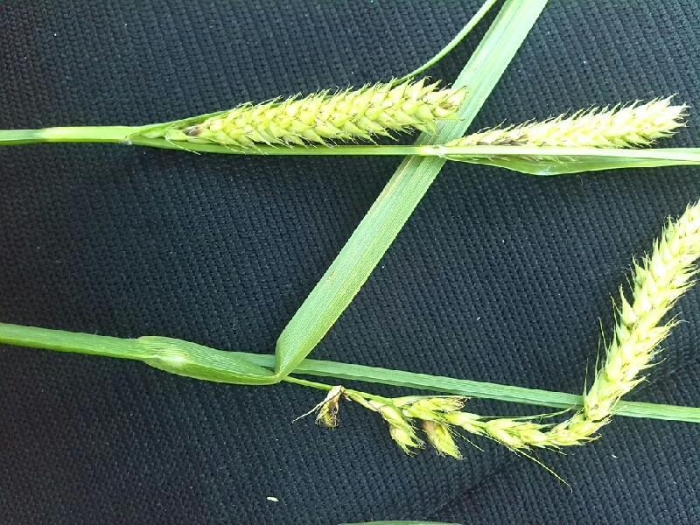Greater Tussock Sedge
(Carex paniculata)
Greater Tussock Sedge (Carex paniculata)
/
/

© Andre Hosper
CC BY 4.0
Image By:
© Andre Hosper
Recorded By:
Copyright:
CC BY 4.0
Copyright Notice:
Photo by: © Andre Hosper | License Type: CC BY 4.0 | License URL: http://creativecommons.org/licenses/by/4.0/ | Uploader: ahospers | Publisher: iNaturalist |
























Estimated Native Range
Summary
Carex paniculata, commonly known as Greater Tussock Sedge, is a perennial herbaceous plant native to a variety of wetland habitats across Europe and Western Asia, including wet woodlands, marshes, fens, and stream margins. It typically grows to a height of 2.5-4 feet (0.8-1.2 meters) and a width of 1.5-2.5 feet (0.5-0.8 meters). This sedge forms dense clumps or tussocks of bright green, grass-like leaves. The inflorescences are composed of green or brown spikelets that appear in the spring and summer, though they are not particularly showy. The plant’s structure adds texture to the landscape throughout the year.
Greater Tussock Sedge is valued for its ability to stabilize soil and its use in waterlogged or riparian restoration projects. It is also utilized in rain gardens, as a ground cover in wet areas, and for naturalistic plantings. This sedge thrives in full sun to part shade and prefers slow draining clay or loam soils, requiring high amounts of water to mimic its natural wetland conditions. While generally low-maintenance, it can be susceptible to rust diseases and may require division every few years to maintain vigor. Carex paniculata is not known for aggressive roots or significant invasiveness, but it can form dense colonies that may outcompete other plants in small garden settings.CC BY-SA 4.0
Greater Tussock Sedge is valued for its ability to stabilize soil and its use in waterlogged or riparian restoration projects. It is also utilized in rain gardens, as a ground cover in wet areas, and for naturalistic plantings. This sedge thrives in full sun to part shade and prefers slow draining clay or loam soils, requiring high amounts of water to mimic its natural wetland conditions. While generally low-maintenance, it can be susceptible to rust diseases and may require division every few years to maintain vigor. Carex paniculata is not known for aggressive roots or significant invasiveness, but it can form dense colonies that may outcompete other plants in small garden settings.CC BY-SA 4.0
Plant Description
- Plant Type: Grass
- Height: 2.5-4 feet
- Width: 1.5-2.5 feet
- Growth Rate: Moderate
- Flower Color: N/A
- Flowering Season: Spring, Summer
- Leaf Retention: Evergreen
Growth Requirements
- Sun: Full Sun, Part Shade
- Water: High
- Drainage: Slow, Standing
Common Uses
Border Plant, Erosion Control, Low Maintenance, Water Garden
Natural Habitat
Native to a variety of wetland habitats including wet woodlands, marshes, fens, and stream margins
Other Names
Common Names: Carnation Sedge, Tufted Sedge
Scientific Names: , Carex paniculata, Carex ×boenninghauseniana var. subpaniculata, Carex ×boenninghausiana var. subpaniculata, Caricina paniculata, Physiglochis paniculata, Rhynchopera paniculata, Rhynchopera paniculata, Vignea paniculata,
GBIF Accepted Name: